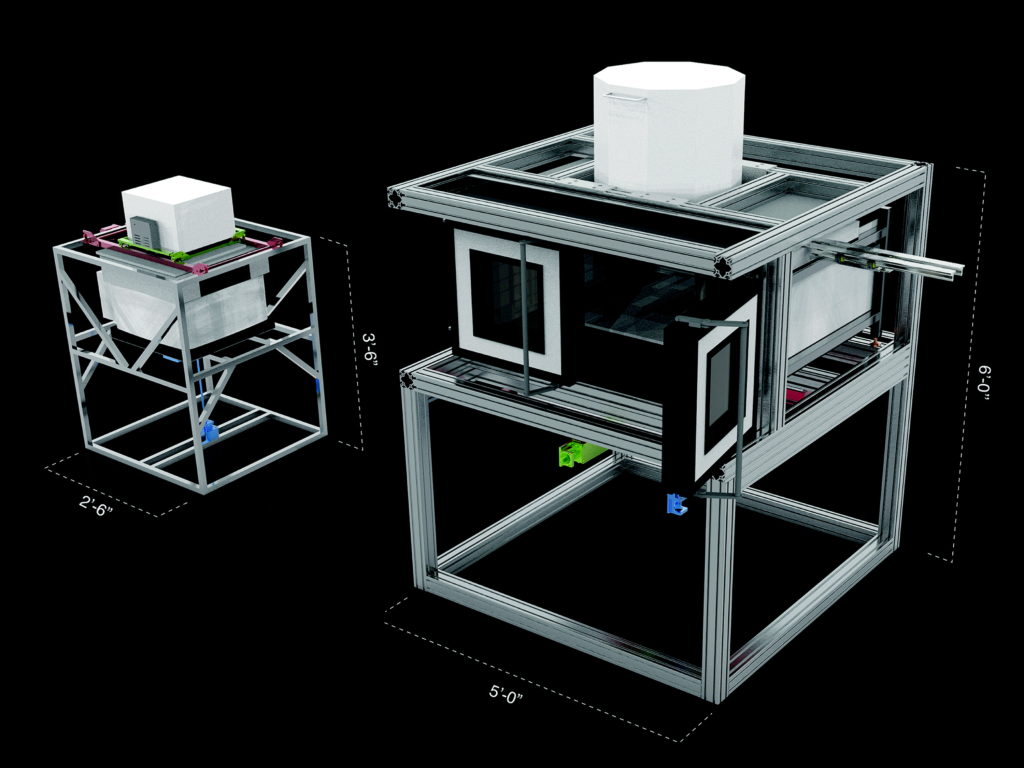In September 2015, MIT Researchers demonstrated the possibility to 3D print optically transparent glass objects. The main challenge at that time was the high temperature needed to melt the material, temperature that did not allow the object to have two desired attributes: strength and transparency.
This hurdle has been overcome by a system that could retain those properties, resulting this way in printed glass objects that are both strong and fully transparent to light. Today, Chikara Inamura, Michael Stern, Daniel Lizardo, Peter Houk and Neri Oxman, the researchers of this project discuss the evolution of this 3D printer.

To upgrade the glass 3D printer G3DP2, the main goals of the researchers were:
- Develop an industrial-scale molten glass feedstock 3D printer by extending the research previously conducted at MIT, enhancing the material properties and range of products that could be produced.
- Develop an architectural-scale 3D-printed glass structure to evaluate the practical capabilities of the new system in an industrial production.
In the architecture of the new 3D printer, the thermal energy applied to the heating system enables the mechanical load of the motion system to function in an independent way. Even though this results in a certain durability of the systems, material properties and analysis of constituent parts still required a careful consideration. Furthermore, “critical focus was given to the print head itself, situated at the interface between the modules and requiring the highest thermal and mechanical performance from its material choice.”
Understanding material behavior across a wide range of temperatures has therefore been a key challenge in this development. The team demonstrated how they found a solution through the 3D printing of three-meter-tall glass columns for the Lexus “Yet” exhibition at Milan Design Week 2017.
Indeed, 15 3D printed glass components were assembled in a vertical way with “thin silicone film joinery and steel post-tensioning systems to ensure vertical stability.” The columns integrated a mobile LED light module fixed on a motion system. The moving light rays and the shape of the glass structures created a nice spectacle.
“In the future, combining the advantages of this AM technology with the multitude of unique material properties of glass such as transparency, strength, and chemical stability, we may start to see new archetypes of multifunctional building blocks,” the researchers conclude. “Transparent and hollow-section glass tubes simultaneously act as an heating, ventilation, and air conditioning (HVAC) system, performing as structure and vasculatures at the same time at building scale, through which synthetic and biological mediums circulate and react to incoming sunlight and surrounding temperature, passively regulating the building while illuminating the interior space as if they were a dynamic stained glass—embodying the fundamental shift in the notion of glass in architecture from human centric toward a symbiosis between human, inhuman, and the built environment.”
For further information about 3D Printing, follow us on our social networks and subscribe to our newsletter!
Would you like to be featured in the next issue of our digital magazine? Send us an email at contact@3dadept.com
//pagead2.googlesyndication.com/pagead/js/adsbygoogle.js
(adsbygoogle = window.adsbygoogle || []).push({});






